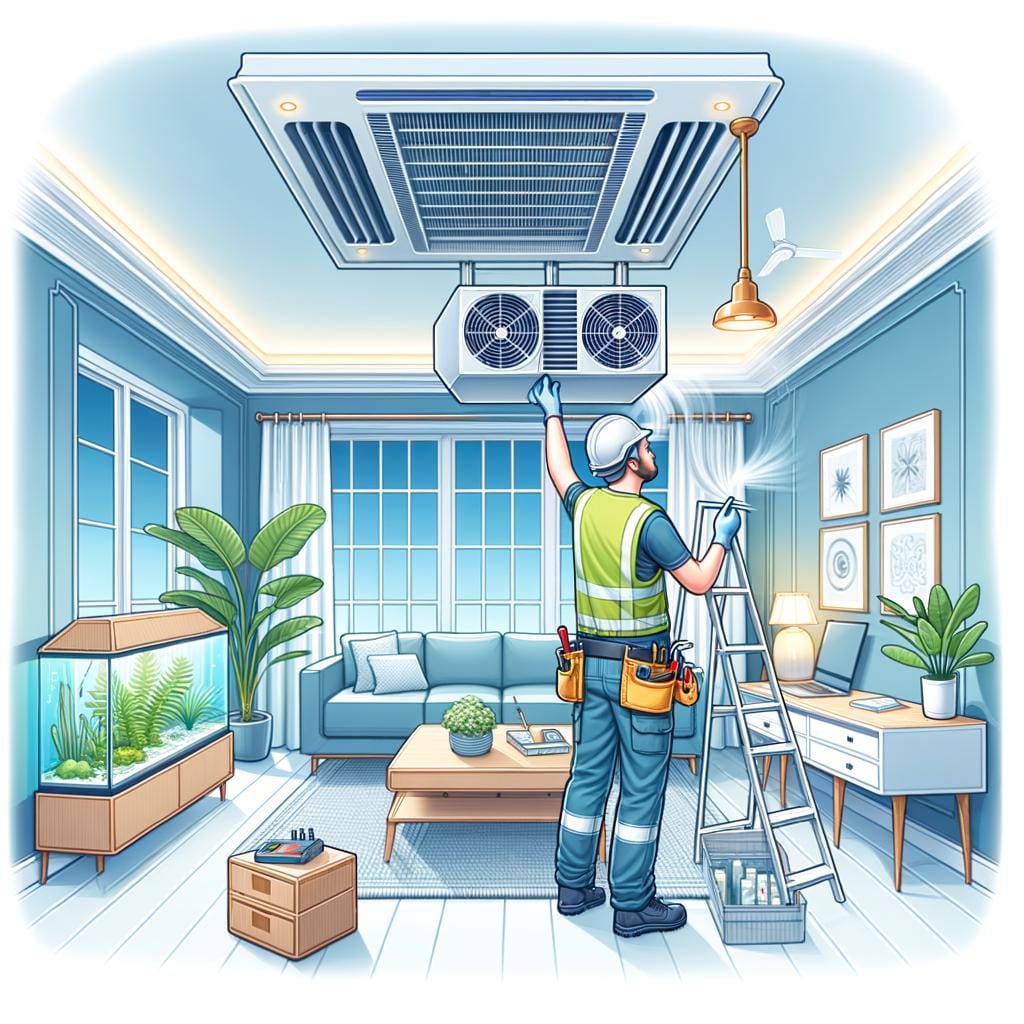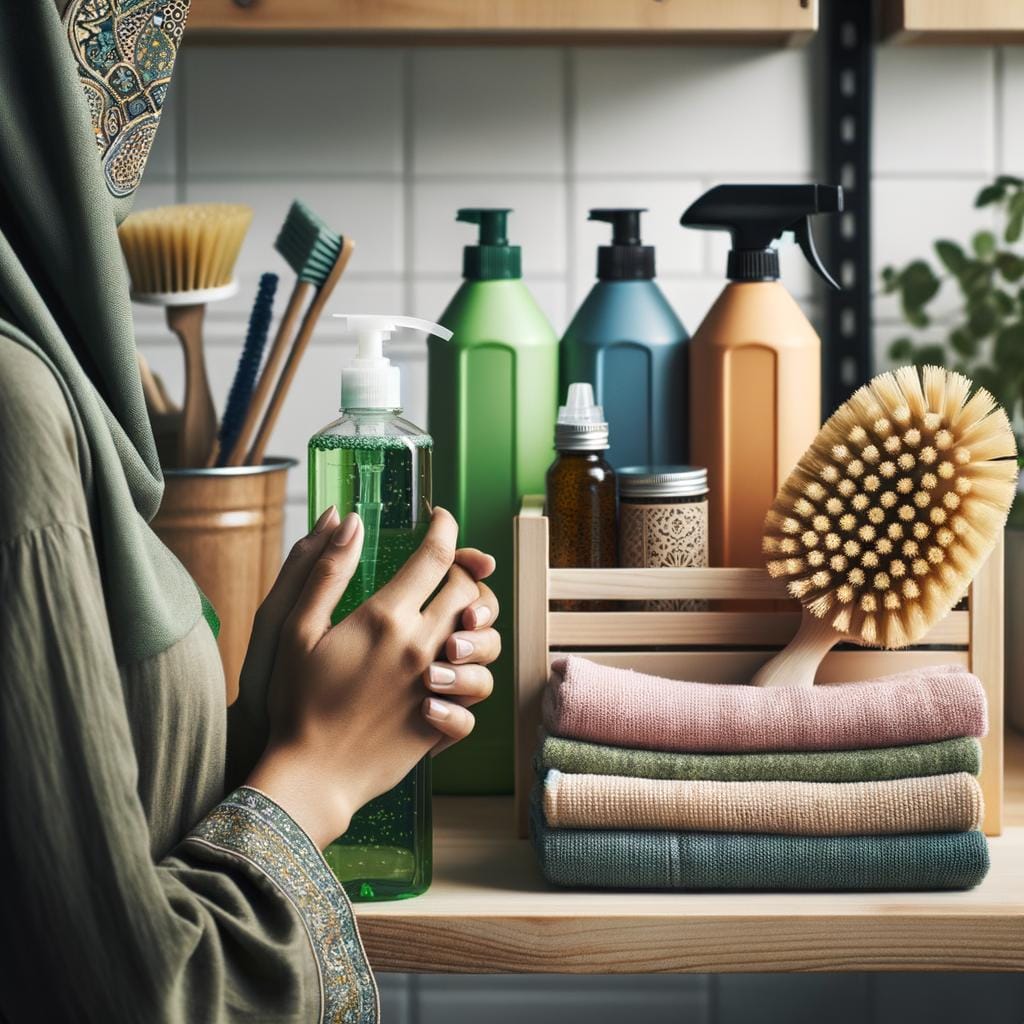Proper ventilation is essential for maintaining a healthy indoor environment, allowing for the exchange of indoor and outdoor air. Ventilation improvements play a crucial role in ensuring adequate air quality and comfort within homes and commercial buildings. Inadequate ventilation can lead to a buildup of pollutants, allergens, and even mold, which can have detrimental effects on health.
Common issues with ventilation systems include insufficient airflow, poor distribution of air, and ineffective filtration of contaminants. These problems can result in stuffy or odorous indoor spaces, as well as contribute to respiratory issues and allergies among occupants. By addressing these issues through ventilation improvements, one can significantly enhance the overall well-being of individuals residing or working in these spaces.
The benefits of ventilation improvements go beyond simply improving air quality. A well-ventilated space can also help regulate temperature and humidity levels, reducing the risk of mold growth and providing a more comfortable environment for occupants. Moreover, proper ventilation can lead to energy savings by optimizing heating and cooling systems, ultimately resulting in reduced energy bills.
Common Issues With Ventilation Systems in Homes and Commercial Buildings
Proper ventilation is crucial for maintaining a healthy and comfortable indoor environment in both homes and commercial buildings. However, many ventilation systems face common issues that can impact their effectiveness. Addressing these issues through ventilation improvements is essential to ensure optimal air quality and circulation.
Obstruction of Airflow
One of the most common issues with ventilation systems is obstruction of airflow. This can occur due to blockages in ductwork, clogged filters, or closed vents. When airflow is restricted, it can lead to poor air quality, uncomfortable temperature fluctuations, and even mold growth. Improving ventilation by removing obstructions and ensuring proper airflow can significantly enhance the overall indoor environment.
Poor Ventilation Design
Another common issue is poor ventilation design in homes and commercial buildings. Inadequate placement of vents, insufficient air intake/exhaust points, or improper sizing of ventilation systems can result in inefficient air circulation. Upgrading the ventilation system design to meet the specific needs of the space can help address these issues and improve overall air quality.
Lack of Maintenance
Many ventilation systems suffer from a lack of regular maintenance, which can lead to various problems over time. Dust build-up in ducts, worn-out components, and malfunctioning controls are all consequences of neglecting proper maintenance. By investing in regular servicing and upkeep of ventilation systems, property owners can prevent potential issues and ensure optimal performance for years to come.
By addressing these common issues with ventilation systems through improvements such as regular maintenance, system redesign, or installation upgrades, property owners can create a healthier and more comfortable living or working environment for occupants. Prioritizing ventilation improvements not only enhances air quality but also contributes to energy savings and overall well-being.
The Benefits of Ventilation Improvements for Health and Well-Being
Proper ventilation plays a crucial role in maintaining a healthy indoor environment and enhancing overall well-being. While it may not always be at the forefront of people’s minds, the quality of indoor air can significantly impact respiratory health, productivity, and comfort levels. Ventilation improvements are essential to ensure that indoor spaces have an adequate supply of fresh air while efficiently removing pollutants and excess moisture.
One of the primary benefits of ventilation improvements is the reduction of indoor air pollutants. Poor ventilation can lead to a buildup of harmful contaminants such as allergens, volatile organic compounds (VOCs), and mold spores. These pollutants can exacerbate respiratory conditions like asthma and allergies, as well as contribute to headaches, fatigue, and other health issues. By enhancing ventilation systems, individuals can breathe cleaner air and enjoy a healthier living or working environment.
In addition to reducing indoor pollutants, ventilation improvements also help regulate humidity levels within a space. Proper humidity control is essential for preventing mold growth, which can cause respiratory problems and damage to building structures. By implementing effective ventilation strategies, individuals can maintain optimal humidity levels in their homes or commercial buildings. This not only protects their health but also preserves the integrity of the property over time.
| Indoor Air Pollutants | Health Issues |
|---|---|
| Allergens | Asthma exacerbation |
| VOCs | Headaches, fatigue |
| Mold spores | Respiratory problems |
Different Types of Ventilation Systems Available for Improvements
Proper ventilation is essential in maintaining a healthy and comfortable indoor environment. There are several types of ventilation systems available for homeowners and commercial building managers to consider when looking to make improvements. Each system has its own benefits and features, catering to different needs and requirements. Below are some common types of ventilation systems that can be considered for improvements:
- Natural Ventilation: Natural ventilation relies on natural airflow through windows, doors, or vents to circulate fresh air in the indoor space. This type of system can be cost-effective and energy-efficient, but may not provide consistent airflow in all areas of a building.
- Mechanical Ventilation: Mechanical ventilation involves the use of fans or blowers to exhaust stale air and bring in fresh air from the outside. This system can be more controlled and effective in ensuring proper airflow throughout a building, especially in areas with limited access to natural ventilation.
- Whole House Ventilation: Whole house ventilation systems are designed to provide balanced airflow throughout an entire home, ensuring consistent air quality and comfort levels in every room. These systems often include features such as heat recovery or energy recovery to maximize efficiency.
When considering ventilation improvements for a residential or commercial property, it is important to assess the specific needs of the space and choose a system that aligns with those requirements. Working with HVAC professionals can help determine the best type of ventilation system for optimal indoor air quality and comfort.
Investing in ventilation improvements can not only enhance the overall health and well-being of occupants but also contribute to energy savings by improving efficiency in heating and cooling systems. By choosing the right type of ventilation system for your property, you can create a healthier and more comfortable living or working environment for everyone.
Signs That Indicate a Ventilation System Needs Upgrades or Replacements
Proper ventilation is crucial for maintaining a healthy and comfortable indoor environment. However, like any system, ventilation systems can deteriorate over time, leading to various issues that may compromise air quality and overall well-being. It is essential to be aware of signs that indicate a ventilation system needs upgrades or replacements to ensure optimal performance.
Unpleasant Odors
One of the most common signs that your ventilation system requires attention is the presence of unpleasant odors in indoor spaces. Foul smells could indicate poor ventilation, which may lead to a buildup of harmful pollutants and contaminants in the air. If you notice persistent odors that don’t seem to go away, it could be a sign that your ventilation system is not effectively removing airborne particles from your home or building.
Excessive Humidity
High levels of humidity can impact indoor air quality and create a breeding ground for mold and mildew growth. If you consistently experience condensation on windows, walls, or ceilings, it may suggest that your ventilation system is not adequately controlling moisture levels. Upgrading to a more efficient ventilation system can help reduce humidity levels and prevent potential health hazards associated with mold infestations.
Poor Airflow
Insufficient airflow throughout your home or building can result in uneven temperature distribution and discomfort for occupants. If certain areas feel stuffy or stagnant while others remain chilly, it may indicate issues with your ventilation system. Improving airflow through upgrades or replacements can help create a more balanced and comfortable indoor environment for everyone.
Regular maintenance and inspections are essential to identify these signs early on and address them promptly to avoid further complications. By investing in ventilation improvements, you can enhance air quality, promote better health outcomes, and create a more enjoyable living or working space for all occupants.
Steps to Take to Improve Ventilation in a Residential or Commercial Setting
Proper ventilation in both residential and commercial settings is crucial for maintaining a healthy and comfortable indoor environment. When it comes to improving ventilation in a building, there are several steps that can be taken to ensure clean and fresh air circulation. One of the first steps is to assess the current ventilation system in place and identify any issues or inefficiencies. This can involve conducting airflow tests, inspecting ductwork, and checking for any blockages or leaks.
Once any problems with the existing ventilation system have been identified, the next step is to consider upgrading or replacing the system with a more efficient one. This could involve installing a mechanical ventilation system that automatically controls airflow based on occupancy levels or outdoor conditions. Another option could be implementing natural ventilation solutions such as operable windows or vents that allow for the intake of fresh outdoor air.
In addition to upgrading the ventilation system itself, other steps that can be taken to improve ventilation in a residential or commercial setting include regularly changing air filters, ensuring proper maintenance of HVAC equipment, and promoting good indoor air quality practices like reducing sources of indoor pollutants. By taking these steps and investing in ventilation improvements, occupants can enjoy better air quality, increased comfort, and improved overall health and well-being.keyword: ventilation improvements.
Cost Analysis of Ventilation Improvements and Potential Savings in Energy Bills
Proper ventilation is crucial for maintaining a healthy and comfortable indoor environment. However, many homes and commercial buildings suffer from common issues with their ventilation systems, which can lead to poor air quality, increased humidity, and even mold growth. This is where ventilation improvements come into play, offering not only better air circulation but also significant benefits for overall health and well-being.
When considering ventilation improvements, one of the key factors to take into account is the potential cost involved. While there may be upfront expenses associated with upgrading or replacing ventilation systems, the long-term savings in energy bills can often outweigh these costs. By investing in more efficient ventilation systems, not only can you ensure better air quality and comfort but also reduce your energy consumption and lower utility expenses in the process.
To help you understand the potential savings in energy bills through ventilation improvements, here are some key points to consider:
- Upgrading to energy-efficient ventilation systems can result in reduced electricity usage, leading to lower monthly bills.
- Improved air circulation can help maintain a more consistent temperature throughout your home or commercial space, reducing the reliance on heating or cooling systems.
- Properly ventilated spaces are less likely to experience moisture buildup or condensation issues, which can contribute to higher energy consumption for dehumidification or HVAC systems.
Case Studies of Successful Ventilation Improvement Projects
Ventilation improvements are not only crucial for maintaining indoor air quality but also for ensuring the health and well-being of individuals in residential and commercial spaces. One successful case study of ventilation improvement projects involved retrofitting an older commercial building with a new mechanical ventilation system. Prior to the upgrade, occupants frequently reported stuffy air, odors, and discomfort. After the installation of the new system, there was a noticeable increase in air circulation and freshness within the building.
In another case study focused on residential properties, a series of ventilation improvements were made to address issues such as high humidity levels, mold growth, and poor air quality. By installing energy recovery ventilators (ERVs) and exhaust fans in key areas like bathrooms and kitchens, the homeowners experienced a significant reduction in moisture-related problems and an overall improvement in indoor air quality. This led to fewer respiratory issues among residents and a more comfortable living environment.
Data from these successful ventilation improvement projects show that investing in upgraded ventilation systems can lead to tangible benefits for occupants. Improved air circulation can reduce the presence of allergens, pollutants, and pathogens in indoor spaces, ultimately enhancing overall health outcomes. Additionally, proper ventilation can contribute to increased energy efficiency by optimizing heating and cooling systems, which can result in cost savings over time.
| Case Study | Outcome |
|---|---|
| Commercial Building Retrofit | Improved air circulation; reduced complaints of stuffiness |
| Residential Ventilation Upgrades | Reduced moisture-related issues; improved indoor air quality |
Conclusion
In conclusion, the significance of investing in ventilation improvements cannot be overstated when it comes to creating a healthier and more comfortable indoor environment. Proper ventilation plays a crucial role in maintaining good air quality, reducing the risk of mold and mildew growth, and ensuring the well-being of occupants in both residential and commercial settings. By addressing common issues with ventilation systems such as poor airflow or inadequate filtration, individuals can significantly enhance their quality of life.
Moreover, the benefits of ventilation improvements extend beyond health considerations. With a well-functioning ventilation system, occupants can enjoy increased energy efficiency, leading to potential savings on utility bills over time. By upgrading to modern ventilation technologies or implementing simple adjustments to existing systems, individuals can create a more sustainable living or working environment while also reducing their carbon footprint.
In light of the various types of ventilation systems available for improvements and the clear indicators that signal when upgrades or replacements are needed, it is evident that prioritizing proper ventilation is key to enhancing indoor spaces. Whether through natural ventilation methods, mechanical solutions like exhaust fans or air purifiers, or comprehensive HVAC systems, taking proactive steps to improve ventilation will ultimately lead to a better quality of life for all occupants.
As we move towards more energy-efficient and sustainable building practices, investing in ventilation improvements remains an essential aspect of creating healthier and more comfortable indoor environments.
Frequently Asked Questions
What Does Improved Ventilation Mean?
Improved ventilation refers to the process of increasing air circulation in a particular space, such as a room or building. This can involve removing stale air and replacing it with fresh air from outside, leading to better indoor air quality.
What Are the 4 Types of Ventilation?
The four types of ventilation include natural ventilation, mechanical ventilation, mixed-mode ventilation, and hybrid ventilation. Natural ventilation relies on wind and temperature differences to circulate air, while mechanical ventilation uses fans or exhaust systems to achieve the same result.
Which Type of Ventilation Is Most Effective?
Among the four types of ventilation, mechanical ventilation is often considered the most effective in providing consistent air circulation and maintaining desired indoor air quality levels. Mechanical systems can be controlled more precisely compared to natural or passive methods, ensuring optimal airflow at all times.

Hello, I’m April Denton, your go-to expert for all things home decluttering and organization. With over a decade of experience helping individuals transform their living spaces into serene, clutter-free sanctuaries, I am passionate about the life-changing benefits of decluttering. My journey into the world of organization began out of necessity, juggling a busy career and a bustling household. I quickly realized that a well-organized home was the key to a more balanced, stress-free life.





